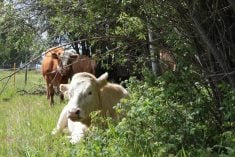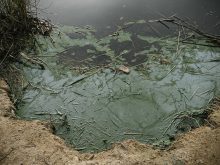The only constant is change and I have seen a lot of changes in beef production; this article will outline some of them.
With lots of evidence of warmer summers, water access is paramount in most of our eyes. There’s more capacity for access by all classes of cattle, including from newly designed water troughs being fed by solar pumps.
It may be wise to have a look at all your watering bowls, how much capacity they have and the space for the cattle to drink water.
Read Also

Cancer agency reclassifies another herbicide ‘probably carcinogenic’
The WHO’s cancer research agency has now put atrazine, a herbicide well known to corn growers, in the same potential-hazard category where the agency put glyphosate.
Cattle, especially slaughter cattle, are getting bigger, so watering the same number of animals today means more weight — and more demand for water. The future may see more measurable parameters when it comes to water output. We all know warmer summers with 35 C days really increase thirst and water consumption.
Colostrum
There’s always more and more talk on colostrum and its role in healthy calves. More than any drug, colostrum is vitally important to the newborn calf. Not only the time at which it’s ingested but also the amount and quality factor into whether a calf gets its necessary immunoglobulins.
I have heard of many a producer giving a bag of commercial colostrum substitutes. Colostrum substitutes can vary in quality; as well, females are exposed to organisms on your place so should have decent-quality colostrum. If in doubt, get some checked, but always have a supply of commercial colostrum substitutes and use the advice your veterinarian gives you.
Spending the time at this early stage of development is critical to success.
Get all the necessary supplies lined up for calving and practice good biosecurity by at least using a boot dip or disinfectant mat and stressing visitors are off-limits until after breeding season.
Preventives
The use of intranasal vaccines near birth has been a rising star in cattle production. They are being adopted by many producers seeing pneumonic-type issues early in a calf’s life.
Clostridium perfringens A, or hemorrhagic bowel syndrome (HBS), is more diagnosed in the beef cattle population whereas previously it was only being seen in dairy cattle. There is hope on the horizon as Merck, the pharma company, plans to have a new product available for this. It will be called Covexin 10 and is a multivalent clostridial disease vaccine that covers Clostridium perfringens A. We don’t need to get an EDR (emergency drug release) to bring it in. This product should be available in Canada by the end of the summer — so, good news.
At a recent cattle show I was impressed how many purebred producers were relying heavily on temperature before treating and, in really grey cases, were using the approach of treating initially with NSAIDs before jumping to antimicrobials. I foresee a day where fewer antimicrobials will be used because of resources such as preventive vaccines, soft weaning and other de-stressing agents I will talk about next.
Keeping cattle chill
Reducing stress on cattle should reduce morbidity and mortality of calves such as at weaning or in transportation over long distances. Even injuries or lameness from slipping or tripping can be reduced with calmer cattle.
In the old days, if we really wanted to calm down fractious wild cattle, we could sedate them, which would last several hours. Now a few products have come on the market that may be game changers for the cattle industry.
One is DeStress, a nutritive supplement containing, among other things, an amino acid that calms animals. It was developed primarily to decrease shrinkage on shipping to market and its effects last about a day. It’s proved economically viable, especially on long hauls.
Now a newer product, which relies on a calming or appeasing substance for cattle, has been developed. There are similar products for swine, horses and small animals, so if you have an interest in those species, definitely look up the appeasing products for them. The cattle product, called FerAppease, is applied topically in two locations in the head area, and will essentially calm cattle down for up to 14 days.
I’ve tried FerAppease for calming cattle down for weaning, for showing, for shipping and even for introducing bulls together. If this gets the response it is supposed to, the beef industry may find many uses for it, including for traumatic procedures such as castration, dehorning or branding. You should be able to see the effect it is having on cattle yourself. It could be a real win for the entire cattle industry.
Always watch for future developments in the cattle industry, as many could have a huge benefit to your cattle operation. Time will tell the real impact it will have.















